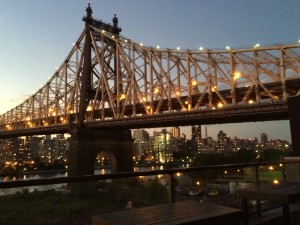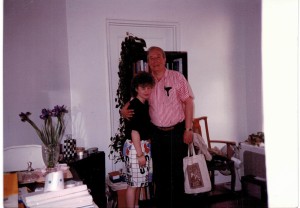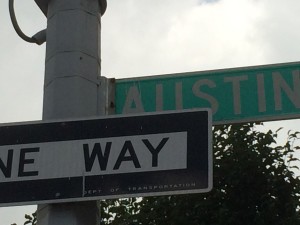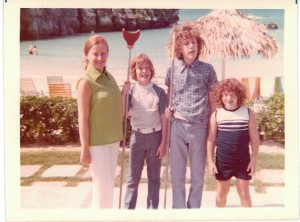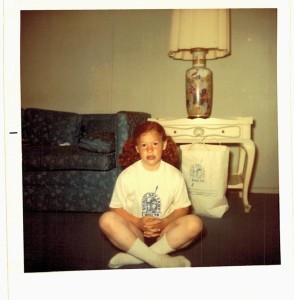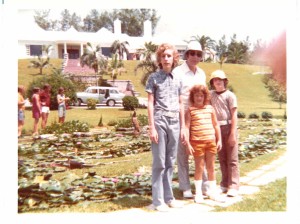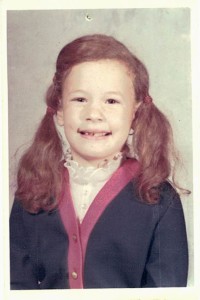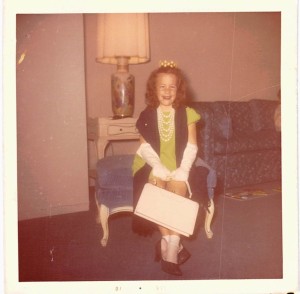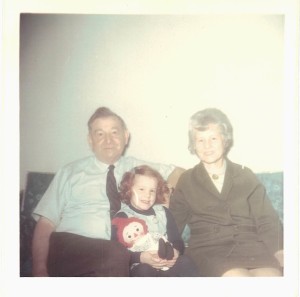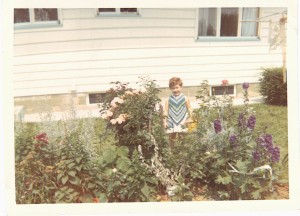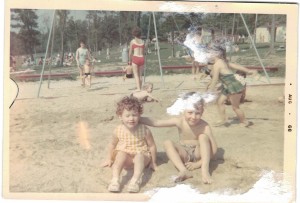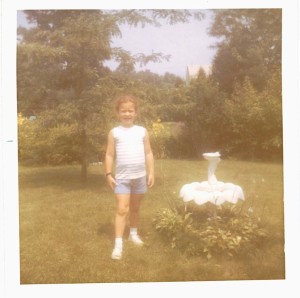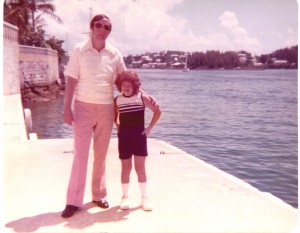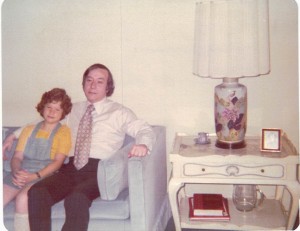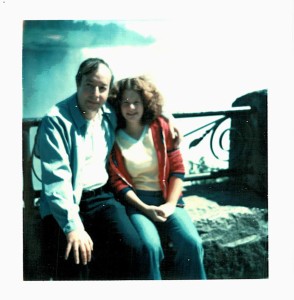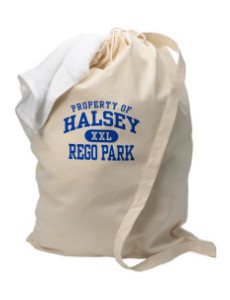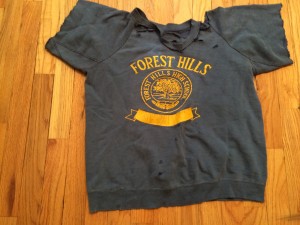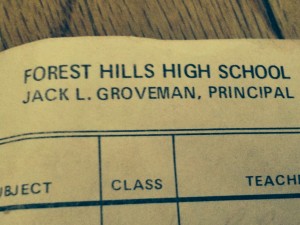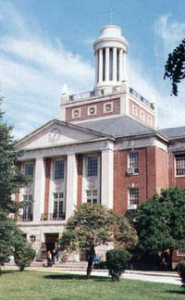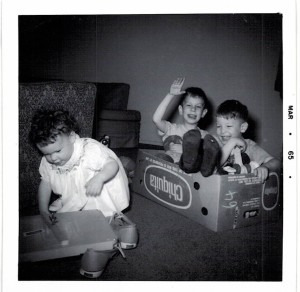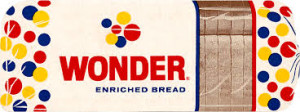 Every Saturday morning, Mom ventured out to the supermarket called Waldbaum’s right up the street from our house. We couldn’t wait for her to arrive home with the loot, since by Saturday we were all fighting over the only thing left in the house to eat, the hot mustard sauce left over from the previous night’s Chinese take out.
Every Saturday morning, Mom ventured out to the supermarket called Waldbaum’s right up the street from our house. We couldn’t wait for her to arrive home with the loot, since by Saturday we were all fighting over the only thing left in the house to eat, the hot mustard sauce left over from the previous night’s Chinese take out.
I often accompanied my Mom on these trips. One might think this is how we spent quality mother-daughter time, but the reality is I wanted to wield some influence to convince my mother that Keebler chocolate fudge covered grahams were my constitutional right.
Besides that, Mom needed my help. Back in the 1970’s virtually no groceries were bagged in plastic. You came to the supermarket with a shopping cart and the check out girls would pack your groceries in double bagged paper. Each bag was filled half-full with groceries and then another bag was inserted on top and the process continued until all the groceries were packed. Shopping for a family of five meant the bags could often be stacked well over Mom’s head and perched precariously like the Leaning Tower of Pisa. To complicate things further, there was a steep downhill between the supermarket and the apartment building and I served as navigator, since she could barely see where she was going.
Our shopping list generally consisted of the four food groups of the typical American family in the 1970’s: artificial flavor, artificial color, salt, and sugar. The food we ate was so laden with preservatives and chemicals that have since been outlawed, that a steady diet of paint chips would have been a vast improvement. And by the way, lots of kids ate them back then too.
So here are my top memories of supermarket purchases between 1973 and 1979. They may not have been good for us, but they are accompanied by some awesome memories.
- Jello. We always had Jello in the house and this served as dessert in a pinch once we’d eaten all the really bad cookies. On one occasion, Mom managed to mess up the complicated preparation process (add water and stir) and the Jello set with some funky kind of film at the top. Convinced she’d bought defective Jello, Mom wrote a letter to the manufacturer explaining her disappointment. We were sent eight free boxes of Jello which meant we had to go without Entenmann’s for weeks.
- TV Dinners. How exciting to have a choice at dinnertime, just like at a fancy restaurant! However, the choice was always somewhat problematic because it was statistically impossible to select one dinner where you liked all four components of the meal. If you selected the turkey dinner, the meat was palatable because it was smothered in gravy, but the dessert was barely one step up from cranberry sauce. If you picked the fried chicken, you had to deal with peas and carrots that were as hard as pebbles. And if you picked the meatloaf, you had to handle the upset stomach from the acid in the sauce. But that dinner came with a brownie. And since I come from a family that only cares about dessert, I went with that one almost every time.
- Pecan Sandies. My father went through a Pecan Sandies phase that lasted about two years. They were one step up from really bad cookies, but not so bad that even he could barely stomach them. They always tasted like salt to me. I now wonder if Dad salted them himself to keep our hands off them.
- Cheez Whiz, Swiss Knight Cheese, and Kraft Singles. The only ingredient NOT present in these foods was cheese. Still trying to figure this one out.
- Coca-Cola. Every week Mom bought seven quarts of Coke until the late 70’s when we were all told that a switch to the metric system (which we likened to Armageddon) was coming and we started buying liters. We were only allowed to open one bottle per night and only at dinner time (probably so the sugar high in the evening hours and erosion of our teeth after our three-second teeth brushing regimen could be fully optimized).
- Hebrew National Bologna. We liked our nitrates just as much as the next family, but in a Jewish sort of way.
- Wonder Bread. Before there were dozens of varieties of white, wheat, rye, and gluten-free bread, we had white bread and crackers. And it’s impossible to make a grilled cheese sandwich with crackers. I made many a grilled cheese sandwich with Wonder Bread and when the packaging got a little too close to the frying pan, you could decorate the pan with blue, red, and yellow polka dots, kind of like your Twister board.
- Saltine Crackers. This is what you ate when you ran out of Wonder Bread and after you’d finished the Ritz crackers. Our version of really bad grilled cheese was saltine crackers with Cheez Whiz.
- Canned Salmon. When I grew up, it didn’t seem like we ate any fish unless the words Gorton’s or Arthur Treacher’s was attached to it. I don’t think you could get decent fish in the supermarket and there was no fish store nearby that I recall. The closest thing we came to fish was a dish called salmon loaf. It was made with canned salmon, white bread (Wonder!) and some other slop to hold it together like eggs, milk, and sour cream. The only thing worse than salmon loaf for dinner was salmon loaf for dinner with Jello for dessert.
- Hawaiian Punch. This was generally only purchased in the small containers that could be packed in our school lunch. This supplied the cheaper version of a sugar rush necessary before we could have our real fix of Coke later in the evening. Hi-C and heaven forbid, Kool-Aid never made it past our doorstep as they were not on Mom’s approved food list. She had her standards, you see.
- Haggen Daz. Like every other family in the 1970’s, we too were fooled into thinking this was some sort of imported ice cream from some exotic region of the world that began with Kaz or Frak or Guetten and ended with Stan. But by the time we realized it wasn’t manufactured in Kazfrakguettenstan, but in the Bronx, we were already hooked.
- Campbell’s Chicken Soup. This was what you were offered when you didn’t feel well and you usually got a few saltines with it. Not a feast of kings, but certainly better than the alternative, a temperature check with a rectal thermometer.
- Captain Crunch, Lucky Charms, Cocoa Krispies, and Sugar Smacks. Frankly, any cereal that changed the original color of the milk to a radioactive-like hue would do. Cereal also served as the morning sugar boost before the lunchtime Hawaiian Punch or evening Coke.
- Raspberry Soda and Beer. These two beverages are grouped together because they were rarely bought and considered a special treat. Once or twice a year, Mom would buy raspberry soda and make us ice cream floats. We had these nifty straws with a spoon at the end that made this treat extra special. Mom was not much of a drinker, but once in a while she’d have a beer with dinner and she’d be three sheets to the wind by the time it was time to break out the Jello.
- Taster’s Choice Instant Coffee. This was almost always on the shopping list. Every morning with breakfast and every evening after dinner, Mom and Dad had a cup of Taster’s Choice Instant Coffee. It was the equivalent of brown water with stuff floating around in it, kind of like New York City tap water in the 1970’s. Perhaps this was the attraction. How much longer could it have possibly taken to make real coffee? Why didn’t they just drink tea? I’ll probably never know.
- Green Giant Frozen Vegetables. These were one part vegetable and five parts butter. We were never served a vegetable in it’s natural form unless you count corn on the cob which was slathered in butter seconds after it was removed from the pot.
- Hostess Cakes. No explanation necessary. Just read any of my 50+ blog posts and you’re bound to find the word Hostess in all of them.
- Pop Tarts. Imagine! Putting something in your toaster and having your entire home smell like a fresh strawberry pastry from a fancy French bakery. Must have been the 2% (or less) dried strawberries or the red dye that made them so authentic. We had English muffins too. We were truly global.
- TV Guide. Ok, this isn’t food, but it was an important weekly supermarket purchase. Before there was cable or Netflix or Hulu, we had to wait to watch our programs. TV Guide was a weekly magazine that allowed you to plan your life around TV and you could purchase it right at the checkout counter at the supermarket. With this magazine, you could see which shows were playing simultaneously and then you were forced to pick one, commit, and live with your decision, at least until summer when reruns were on and there was a slim chance you could catch the episodes you missed. Thank goodness the agony of those days is gone and I can binge watch The Brady Bunch whenever I want.
